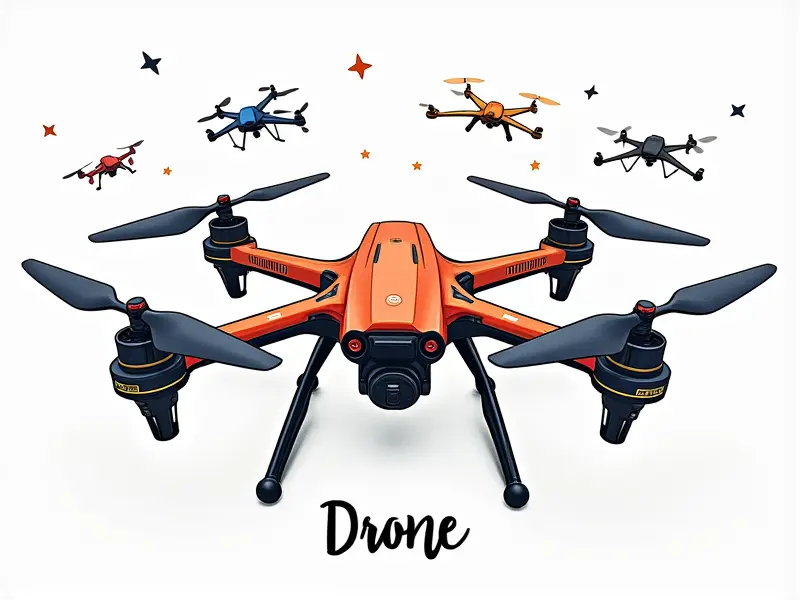Where are Li-ion batteries used?

Lithium-ion (Li-Ion) batteries are ubiquitous in the world of remote-controlled (RC) models, offering significant advantages over other battery types. They provide high energy density, long cycle life, and low self-discharge rates, making them ideal for various RC applications such as quadcopters, drones, helicopters, airplanes, and multirotors.
Choosing the Right Li-Ion Battery for Your RC Setup
Selecting the appropriate Li-ion battery is crucial to ensure optimal performance in your RC setup. Several factors influence this choice:
- Type of Model: Different models require specific battery configurations, such as voltage and capacity.
- Battery Capacity (mAh): Higher mAh ratings provide longer flight times but may increase weight.
- Voltage: Voltage affects the power output and speed of your model. Common voltages include 3S, 4S, and 6S.
- Battery Chemistry: Different chemistries offer varying levels of performance and safety.
Quadcopter Battery Essentials
For quadcopters, the choice of Li-ion battery is critical for achieving balanced flight and extended endurance. Key considerations include:
- Voltage: Most quadcopters use 3S (11.1V) or 4S (14.8V) batteries.
- Capacity: Higher capacity batteries offer longer flight times but may impact maneuverability.
- C-Discharge Rating: The discharge rate should match the motor's power requirements to prevent overheating and damage.
FPV Drone Battery Guide
First-person view (FPV) drones demand high-performance batteries for smooth, uninterrupted video transmission. Important factors include:
- Voltage: Typically 3S or 4S batteries are used.
- Capacity: Higher capacity batteries provide extended flight times but increase weight and cost.
- Balancing: Maintaining a balanced charge across all cells is crucial for safety and performance.
Optimal Li-Ion for RC Racing
In RC racing, the choice of battery can significantly impact lap times and overall performance. Key considerations are:
- Voltage: Higher voltage batteries provide more power but may be heavier.
- C-Discharge Rating: High discharge rates ensure sufficient power delivery during high-speed maneuvers.
- Battery Weight: Lighter batteries improve acceleration and handling, crucial for competitive racing.
Helicopter Li-Ion Battery Guide
For RC helicopters, the battery choice is vital for stability and flight duration. Important factors to consider are:
- Voltage: Commonly used voltages include 3S (11.1V) or 4S (14.8V).
- Capacity: Higher capacity batteries offer longer flight times but may affect agility.
- Battery Weight and Balance: Proper weight distribution is essential for stable hovering.
RC Airplane Li-Ion Power Packs
In RC airplanes, the right battery ensures efficient propulsion and maneuverability. Key considerations include:
- Voltage: 3S (11.1V) to 6S (22.8V) batteries are commonly used.
- Capacity: Higher capacity provides longer flight times but may increase weight and reduce speed.
- Battery Weight Distribution: Proper placement of the battery affects aircraft balance and performance.
Li-Ion Batteries in Multirotors
Multicopters, or multirotors, rely heavily on Li-ion batteries for their complex flight dynamics. Important factors are:
- Voltage: 3S to 6S batteries provide the necessary power.
- Capacity: Higher capacity ensures longer flight times but may affect agility and responsiveness.
- Battery Management System (BMS): Ensures balanced charging and discharging for safety and longevity.
Maximizing Flight Time: Li-Ion Batteries for RC Quadcopters
To maximize flight time in quadcopters, the right battery configuration is essential:
- Voltage Selection: Opt for 3S or 4S batteries depending on your model's requirements.
- Battery Capacity: Higher capacity batteries extend flight duration but may increase weight and reduce speed.
- Efficient Power Management: Implement strategies to optimize power usage, such as reducing throttle during cruising phases.
Safety Tips for Using Li-Ion Batteries in RC Models
Proper handling of Li-ion batteries is crucial to prevent accidents and ensure longevity. Key safety tips include:
- Storage Conditions: Store batteries at room temperature, away from flammable materials.
- Balancing Charging: Use a charger with balancing capabilities to maintain cell balance.
- Avoid Overcharging and Deep Discharge: Prevent overcharging or deep discharges that can damage the battery.
Innovations in Li-Ion Batteries for Enhanced RC Flight
New developments in Li-ion technology continue to enhance performance and safety in RC models. Notable innovations include:
- Advanced Battery Chemistries: Newer chemistries offer higher energy density, longer cycle life, and improved safety.
- Battery Management Systems (BMS): Enhanced BMS provide better control over charging and discharging processes.
- Solid-State Batteries: Emerging technology promises even greater efficiency and safety in the future.
Li-Ion Batteries vs. NiMH in RC Aircraft Performance
When comparing Li-ion batteries to Nickel-Metal Hydride (NiMH) batteries, several factors come into play:
- Energy Density: Li-ion batteries offer significantly higher energy density compared to NiMH.
- Cycle Life: Li-ion batteries typically have a longer cycle life than NiMH.
- Weight and Size: Li-ion batteries are generally lighter and smaller, providing better performance in RC aircraft.
The choice between Li-ion and NiMH ultimately depends on specific application requirements such as weight constraints, flight duration needs, and budget considerations.

